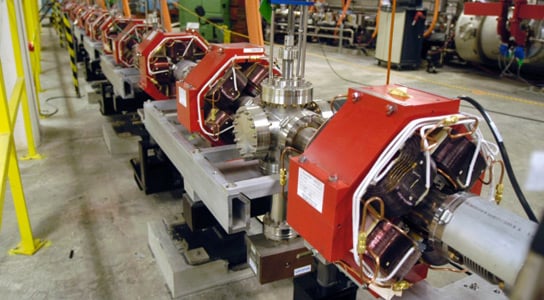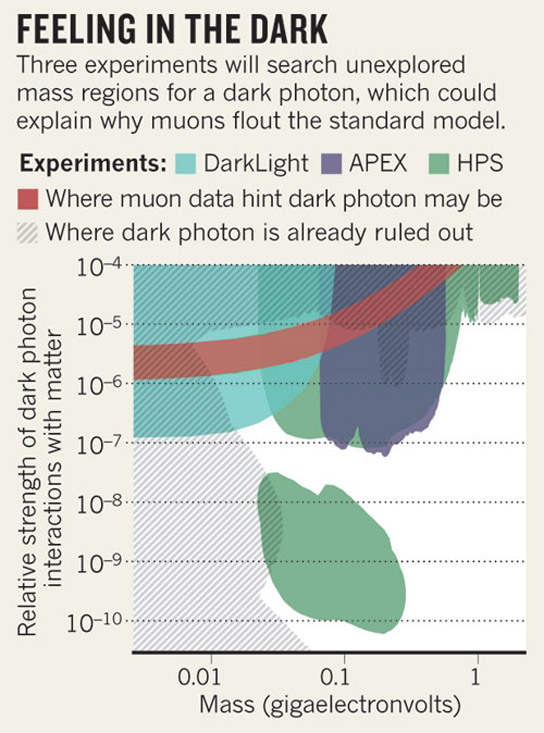
A three-week experiment is set to start on April 24th at the Thomas Jefferson National Accelerator Facility in Newport News, Virginia, in which electrons will crash into a thin tungsten target 500 million times a second that will create a cascade of short-lived particles. Physicists of the Heavy Photon Search (HPS) are hoping to finds signs of a heavy or dark photon.
If discovered, this would lead to world of dark forces and atoms that have been speculated for a long time, but not yet proven. It might also help pin down dark matter, which is thought to comprise 85% of the matter in the Universe.

The researchers concede that this might be a long shot, but it took only $3 million to build and run the HPS detector. Dark photons, unlike normal photons, are supposed to have mass that is only indirectly detectable, after they have decayed into electrons and positrons. Dark photons would carry a new fundamental force, analogous to the electromagnetic force that photons carry. This could lead to a plethora of undiscovered particles and matter, which would include dark matter.
It was hoped that the Large Hadron Collider, the highest-energy and most expensive particle accelerator at CERN would lead to supersymmetry, which could resolve some of the problems of the Standard Model of particle physics.
A dark matter particle from the dark sector, a name referring to dark energy and dark matter, which are two distinct phenomena that seem to have no direct connection, as of yet, could only be seen through the decay of a force-carrying dark photon, which would make positrons, not antiprotons.
While the beams at the Jefferson Lab aren’t the most powerful, they are extremely intense. The main lab has got a 6-gigaelectronvolt electron beam and has the right energy to probe for the likely mass range of a heavy photon. The beam will shut down after three weeks for an upgrade that will double its energy.